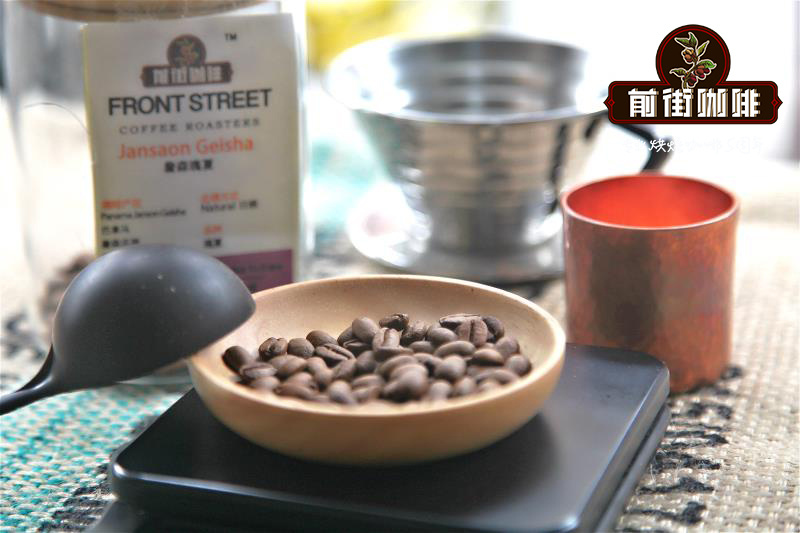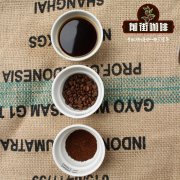Do you know how coffee beans are grown? how do coffee beans grow?

Professional coffee knowledge exchange more coffee bean information please follow the coffee workshop (Wechat official account cafe_style)
Students who often drink coffee will notice that Ethiopia, Brazil, Vietnam and Indonesia, which are rich in coffee, are all located in the tropics. Must coffee be produced in the tropics?
In fact, the area between the Tropic of Cancer and the Tropic of Cancer is indeed rich in coffee, but coffee trees actually have strict requirements for the environment, and the average temperature and rainfall of the cultivated land should be suitable for the growth of coffee trees. Coffee-rich areas are usually the shady side of the mountains and cool areas such as the plateau.
Coffee planting conditions
1. Altitude
Take a closer look, Central America and East Africa, which are suitable for growing coffee trees, are between 1000 and 2000m above sea level. The lowland far from the equator also has a suitable temperature for coffee growth, but altitude is an important factor affecting the quality of coffee. The quality of coffee from high altitude is higher than that from low altitude.
2. Air temperature
The origin of coffee is the shady part of the Ethiopian plateau with a temperature of 20-24C, and the highland with an average temperature of 22C is suitable for growing coffee. Coffee trees with high temperature tend to mature prematurely, which leads to premature senescence and is more likely to be infected with rust; too low temperature will lead to slow growth, short growth and low yield.
3. Soil
Most coffee producing areas are weathered soil of lava and volcanic ash, so they are closely related to volcanoes. Weathered soil with more humus, deep soil layer, strong drainage, pH of 4.5-6.0, this kind of soil is the most suitable for growing coffee.
4. Lighting
Prolonged sunlight exposure can lead to an increase in the temperature of coffee leaves and a decrease in photosynthesis, so they are usually planted on the gentle slope on the east side. If planted in other places, shading trees taller than coffee trees should be planted to protect them from the sun. With the exception of Costa Rica and Brazil, where it is often cloudy in the afternoon, there is no need to plant shading trees.
5. Rainy season and dry season
Most coffee producing areas enter the rainy season immediately after the end of the dry season. Stimulated by torrential rain, coffee trees will bear fruit seven months after flowering, and coffee is harvested once a year in most areas. But in Kenya's equatorial region and Columbia, where the latitude spans from north to south, there are two rainy and dry seasons a year, so coffee can be harvested twice a year.
6. Rainfall
The annual precipitation in the area suitable for planting coffee trees is 1200-1600mm. In the fat period of coffee beans, if Rain Water is insufficient, it will affect the yield. In Africa and other places, production cuts can be seen everywhere due to abnormal weather phenomena such as drought and mistiming of the rainy season.
Coffee results
Coffee trees are evergreen shrubs planted in more than 70 countries with suitable climates, about 25 degrees north and south latitudes in tropical and subtropical areas, blossom and produce cherry-like coffee fruits after planting for about 3 to 5 years.
Coffee will not blossom for the first time until it has been planted for 3-5 years (at least 3 years). White coffee flowers usually have five petals and usually have some jasmine aroma. The flowering period of the coffee tree is very short. It will wither in about 3 days and wither in a week. After the flowers bloom, the fruit grows slowly. After 6-8 months, the coffee fruit ripens slowly. At the beginning, the coffee fruit is green and hard, slowly changes color and softens, and turns into ripe red fruit (there will also be special beans such as yellow bourbon. The color will turn yellow when ripe. ), so the coffee fruit is also called "red cherry" or "coffee cherry".
Coffee is generally grown in the tropics and subtropics before latitude 25 degrees north and south, and only these countries and regions have the conditions to grow coffee; it takes 3 to 5 years for coffee to blossom and bear fruit; good shading effect, high altitude, volcanic rock areas, good beans can produce better quality coffee fruit.
END
Important Notice :
前街咖啡 FrontStreet Coffee has moved to new addredd:
FrontStreet Coffee Address: 315,Donghua East Road,GuangZhou
Tel:020 38364473
- Prev

Where can I sell fresh raw coffee beans? how do I choose the coffee beans I want?
Professional coffee knowledge exchange more coffee bean information please follow the coffee workshop (Wechat official account cafe_style) an Arabica coffee tree harvests coffee beans every year in 1-2kg for coffee lovers, to spoil coffee beans at will is the crystallization of a whole coffee tree. Raw coffee beans are small but in large quantities and are usually packed in dry crude fibers.
- Next

What's the difference between cocoa beans and coffee beans? can coffee trees be planted at home? will they bear fruit?
Professional coffee knowledge exchange more coffee bean information Please follow the coffee workshop (Wechat official account cafe_style) said that drinks are often comparable, coffee and cocoa are people's favorite drinks, but they are foolishly confused about their raw materials coffee beans and cocoa beans, and it is common to get mixed up often. today, the editor is going to teach coffee and cocoa consumers a tutorial on coffee.
Related
- Beginners will see the "Coffee pull flower" guide!
- What is the difference between ice blog purified milk and ordinary milk coffee?
- Why is the Philippines the largest producer of crops in Liberia?
- For coffee extraction, should the fine powder be retained?
- How does extracted espresso fill pressed powder? How much strength does it take to press the powder?
- How to make jasmine cold extract coffee? Is the jasmine + latte good?
- Will this little toy really make the coffee taste better? How does Lily Drip affect coffee extraction?
- Will the action of slapping the filter cup also affect coffee extraction?
- What's the difference between powder-to-water ratio and powder-to-liquid ratio?
- What is the Ethiopian local species? What does it have to do with Heirloom native species?

